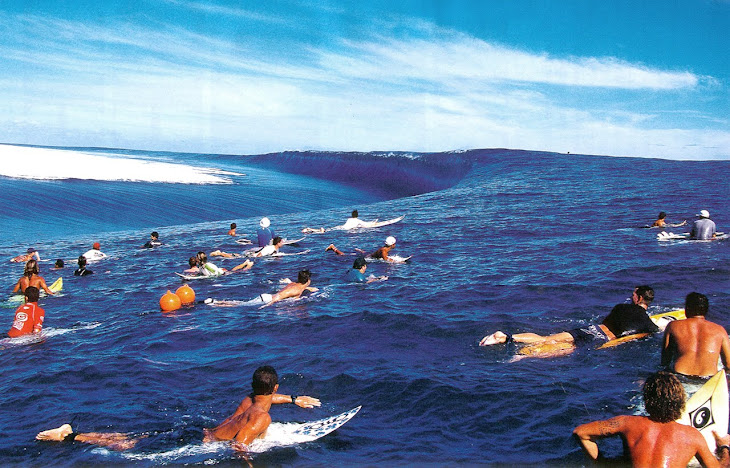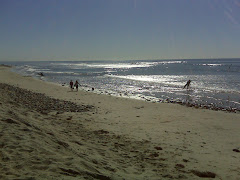Thursday, March 25, 2010
Monday, March 22, 2010
Nothing like this feeling..EVER!!
Waves.....

When and why do waves break?
Swell is only one of the ingredients for great surfing. Surfers don't like any old waves: they want waves that peel (break gradually to the left or right along the wave crest) rather than close out (where the crest folds over and smashes to pieces all in one go). When a wave is peeling, you can ride back and forth across the crest as it slowly breaks; with a wave that's closing out, there's nowhere much to go. In surfing slang, waves that close to the right are called, not surprisingly, "righthanders", while left-breaking waves are "lefthanders". The angle at which the wave peels makes it more or less interesting to surf. The steeper the angle, the harder it is to surf and the more interesting moves you can pull.
What makes a wave break... and peel rather than closing out? When water flows, in the ocean or in a river, its upper layers are travelling faster than its lower layers (indeed, the water is usually stationary on the ocean floor or on a river bed). Think about waves arriving at a beach. As they travel from the open ocean to the shore, they move up a gradual sandy incline, and start to slow down. The bottom of a wave slows more quickly than the top. So instead of a wave moving forwards as one, we have a whole series of water layers sliding past one another, with the top layers moving fastest and the bottom moving slowest. A wave breaks when the top part of the wave goes so far over the bottom part that the wave can no longer support itself—so it completely collapses. A wave peels when this process happens gradually along the length of the wave rather than all at once. If you like, a peeling wave is breaking in two dimensions: along the crest of the wave as the wave advances up the beech or reef.
Waves can break in many different ways, and that largely depends on the profile of the seabed underneath them (known as the bathymetry). All waves will break eventually, but major features like rock or coral reefs, ledges, and sandbars will make one side break before another, causing waves to peel. Nearby groins (sea fences), piers, and jetties can also make waves peel. Different shapes of reef produce different breaking effects. Over the last decade or so, surf science has become advanced enough for engineers to start designing artificial reefs. Rocks or ballast are buried at a key point offshore to give the waves a helping hand in breaking and peeling early in places where they might otherwise simply close out.
Swell and bathymetry are not the only things that affect the quality of your surfing. How the wind is blowing on your beach will make a big difference too. Waves are obviously always travelling from the open ocean towards the beach, like scaled-up versions of ripples on a pond, but the wind can be blowing in any direction. If the wind is blowing directly out to sea, it is known as an offshore wind. As it blows, it will naturally tend to prop up the waves, stopping them from breaking so quickly, cleaning out some of the smaller choppier waves, and making the waves finally break with greater intensity in shallower water. A combination of strong ground swell and a light offshore wind is always best for surfing, especially if the wind has been blowing for a few days (both to create groundswell and to give it time to travel to your beach). If the wind blows in the opposite direction, so it is onshore, it will make the waves collapse much too soon—spoiling your fun!
Science of surfing
Been a while since I posted- been focusing on how to turn into a wave...
http://www.explainthatstuff.com/surfingscience.html
http://www.explainthatstuff.com/surfingscience.html
Thursday, February 18, 2010
Subscribe to:
Posts (Atom)



